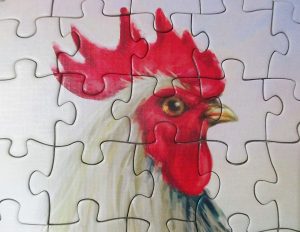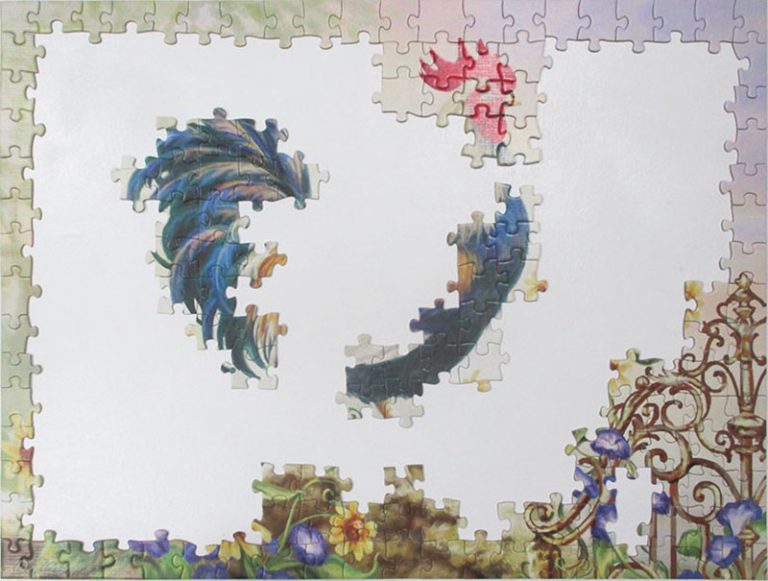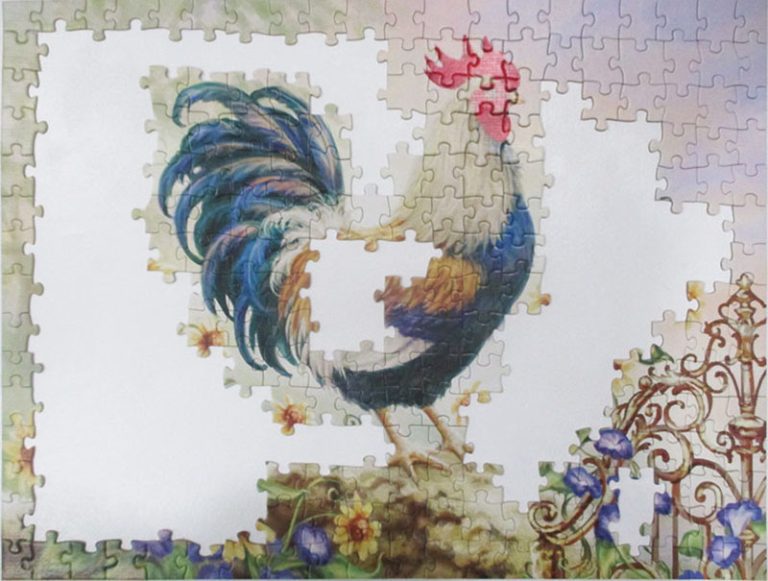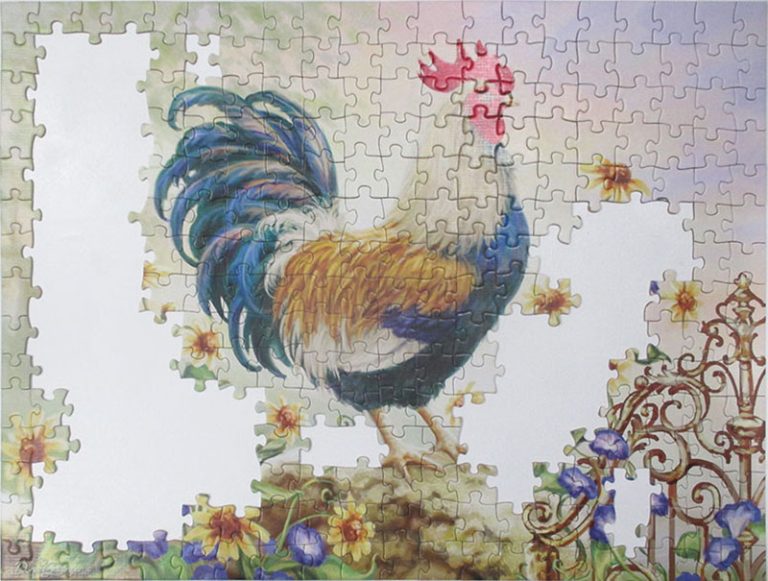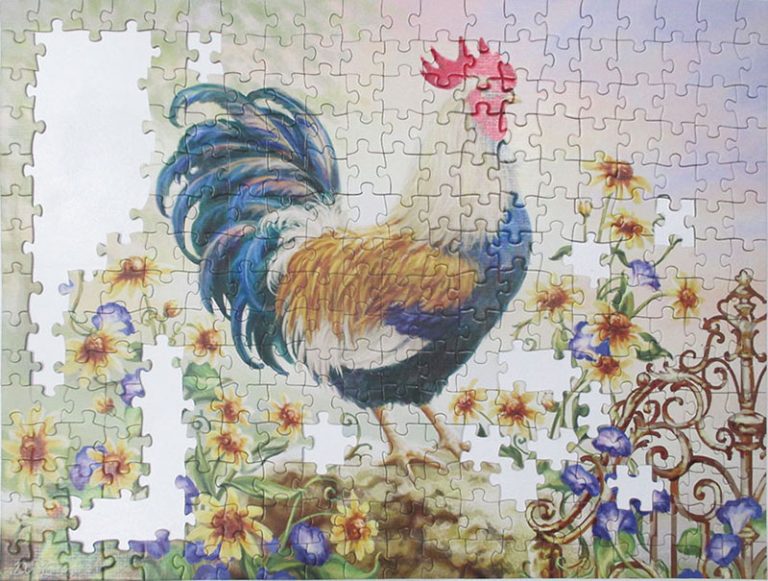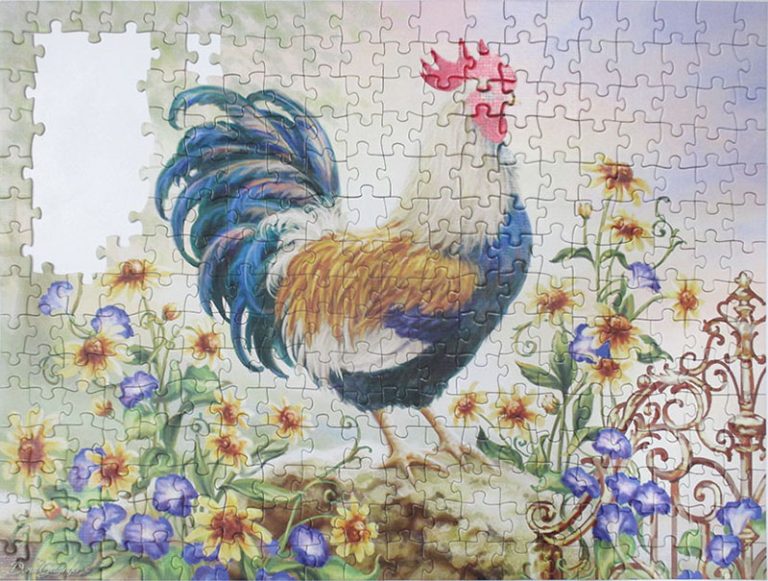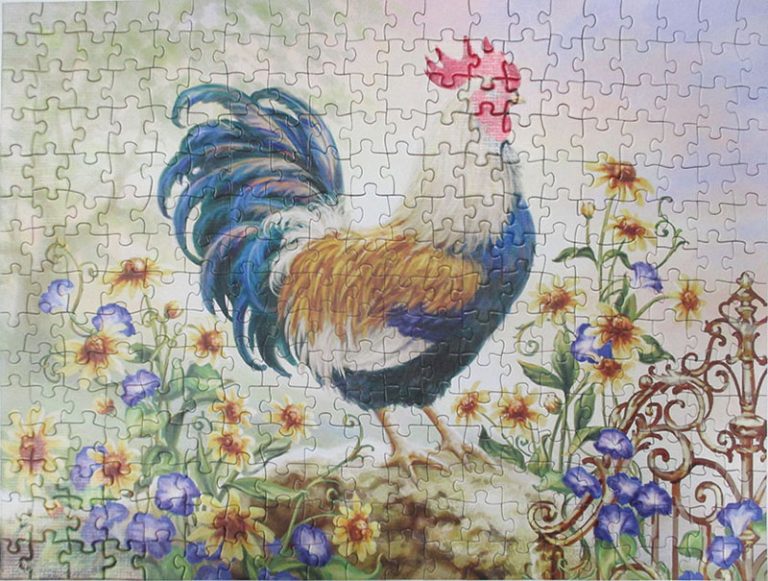This is a hefty doorstopper of a book that I’d given up on twice before- my last attempt I remember putting it aside thinking it was a pretentious slog. Now I wonder what was I thinking? So glad I reshelved it. Now it feels vivid and lively (as lively as a science book can get while still being very serious). All the asides felt relevant, the dashes of humor actually made me laugh, and the personal stories about the author’s travels to do research or view the animals in question, were a delight to read. It took me about three weeks to get through, reading off and on since I started the latest Maugham collection and then a dozen more. It’s dense material, but also so intriguing, the kind that stretches your brain and fills you with both wonder and gloom (at the end).
Song of the Dodo is about (as it neatly states on the cover) island biogeography- a discipline of study that examines why certain animal species are only found on certain islands. Quammen goes into this in meticulous detail. From the very beginnings of island discoveries, when Darwin and Wallace were figuring out that evolution was real, through later scientists who put together how it actually works, and then the people who studied the flip side of that phenomenon- extinctions. There’s so much in here I hardly know how to tell you about it all- and it’s written so well, crafted so methodically, it all makes sense in a way that fills you with dread. This book is very firmly alongside The Ancestor’s Tale in my mind, with how clearly it helps me understand things. How things fit together. How incredibly complex the nautral world is, and how dismaying that just as we are beginning to understand its complexity, it’s starting to fall apart. Because of us.
The book looks at islands. How islands are populated by plants and animals, why those isolated animals take such strange forms. How other species arrive and fit in. Why some animals become smaller on islands than their mainland counterparts (or larger), loose certain abilities (like flight) and so on. Why their existence can be so precarious. What the tipping points are for them to disappear- and it’s not the same in every case, though many things are now measurable. Minimal population size to keep a healthy gene pool, distance between isolated groups that still allows for animals to move between, how environmental changes or disease outbreaks or other random events can push already-tenuous species over the edge into oblivion. But this book doesn’t just describe how these things are, it explains how we came to understand them, with viewpoints from before they were concepts anyone talked about. I found this fascinating, although the data, formulas and descriptions of scientists arguing ideas via journal articles was a tad tedious (and the author assures us, that reading those original sources- articles, papers and journals themselves is even more so!)
I loved reading all the details about animals, odd and curious and terribly unique species such as the tenrec, indri, komodo dragon, thylacine, bird of paradise, Mauritius kestrel (and the amazing sleight-of-hand performed by researchers to save it). More well-known creatures such as giant tortise, passenger pigeon, grizzly bear, red fox, etc. And of course the dodo. All of it to show how untenable the existence of so many animals has become, or will become in the future- because human destruction and encroachment on habitat has turned many wildlife populations into essentially, island populations. They are separated from each other by obstacles they will or cannot cross, and as the author detailed so painstakingly in the first few hundred pages of the book, animals in populations that have no individuals moving in and out, are eventually doomed to fail. One final section of the book is called World in Pieces, because it really is. It makes me so sad. But I’m glad it closes on a final, partly hopeful note, that some people are working hard to make a difference, with examples of places where those efforts have actually mattered, with animals kept from disappearing altogether, even when their numbers were so low statistics would say they’re doomed. Not always though! After turning the final pages, I looked a few things up. Twenty-five years ago, this author opined that the chuckwalla (a lizard) on Isla Ángel de la Guarda would go extinct. It’s still here!
But still, such a fantastic book and it made me feel glum.

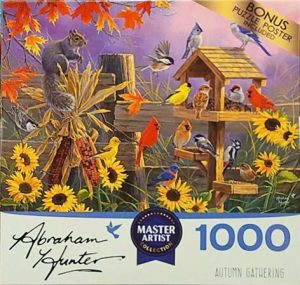 This was a nice puzzle. Has the same box design as those Ceaco puzzles, the same very shiny surface that reflects a tad too much. However the colors are super bright and distinct, so it didn’t matter much. Pieces bit on the small side, but enough variety it wasn’t too difficult to do. There was one piece missing, which I successfully patched (my kid couldn’t find the replacement piece in the puzzle until I pointed it out!)
This was a nice puzzle. Has the same box design as those Ceaco puzzles, the same very shiny surface that reflects a tad too much. However the colors are super bright and distinct, so it didn’t matter much. Pieces bit on the small side, but enough variety it wasn’t too difficult to do. There was one piece missing, which I successfully patched (my kid couldn’t find the replacement piece in the puzzle until I pointed it out!)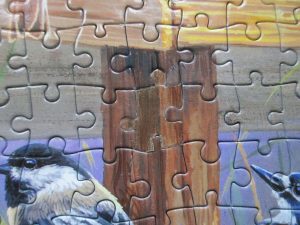
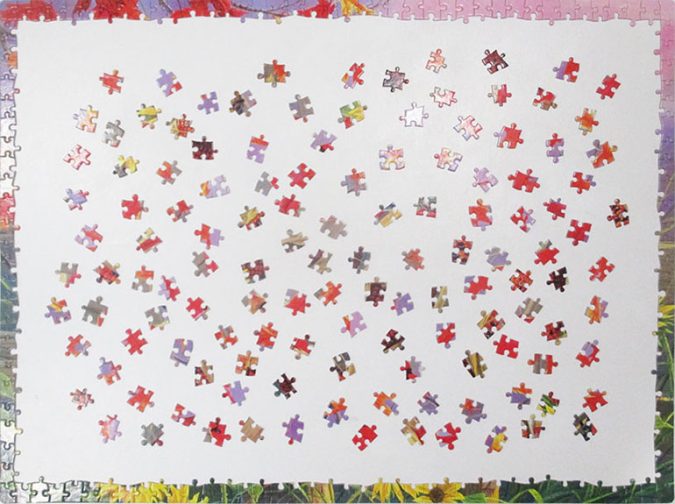
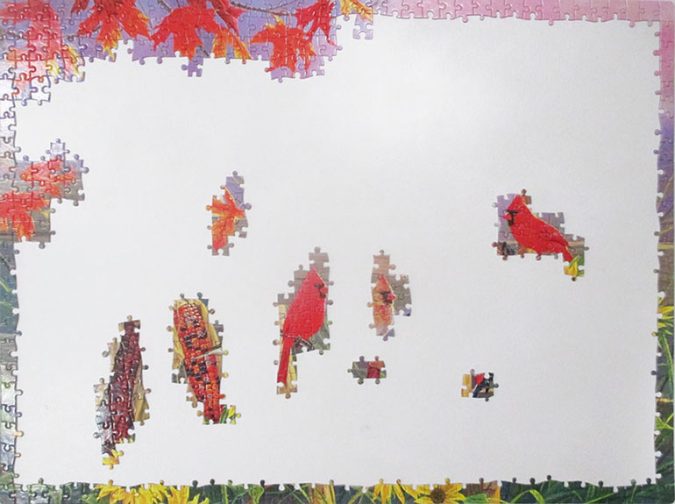
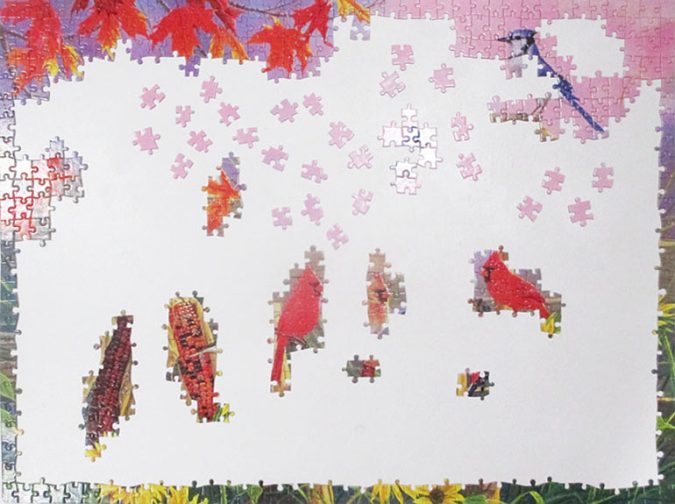
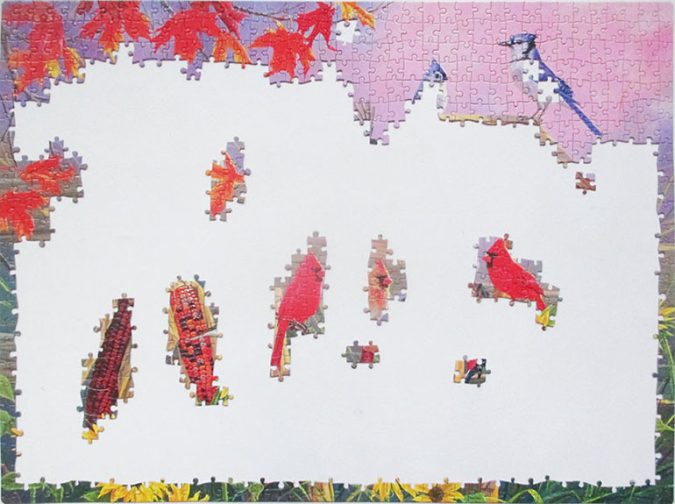
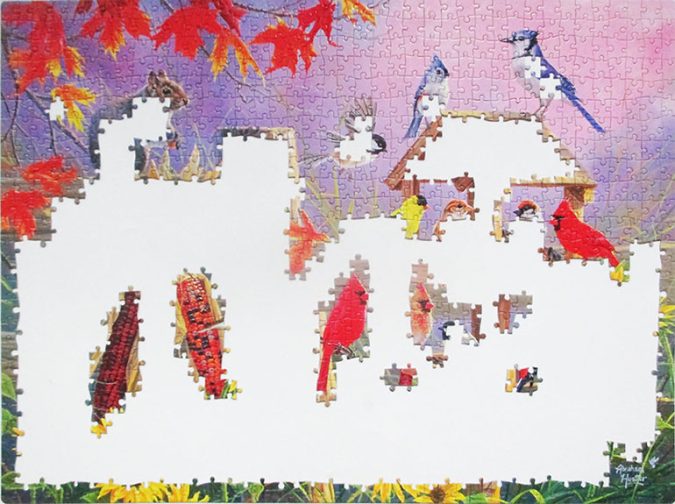
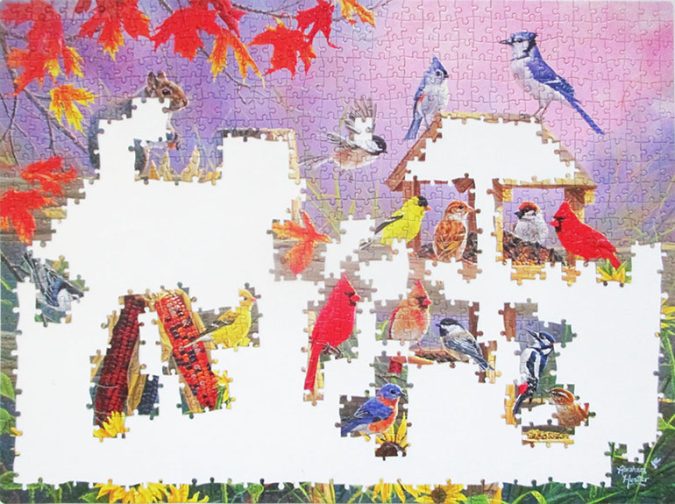
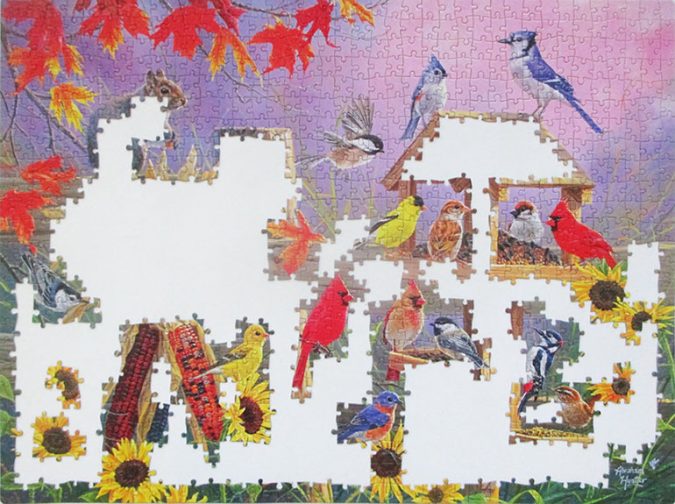

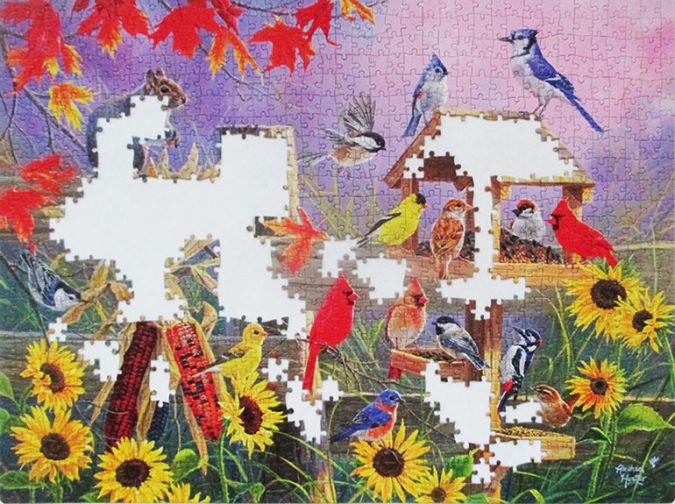
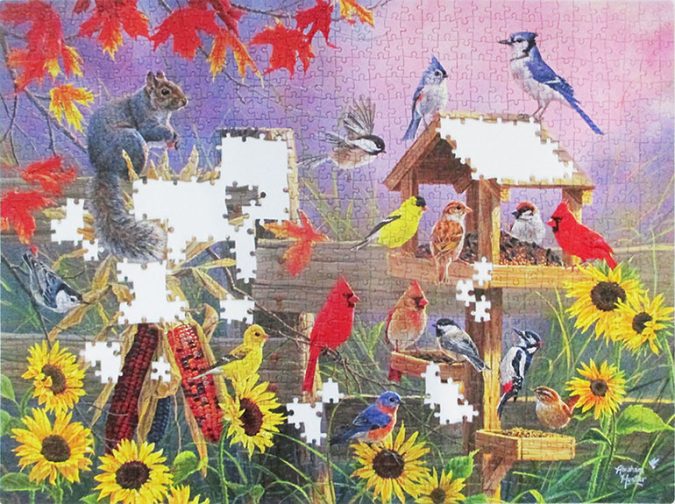


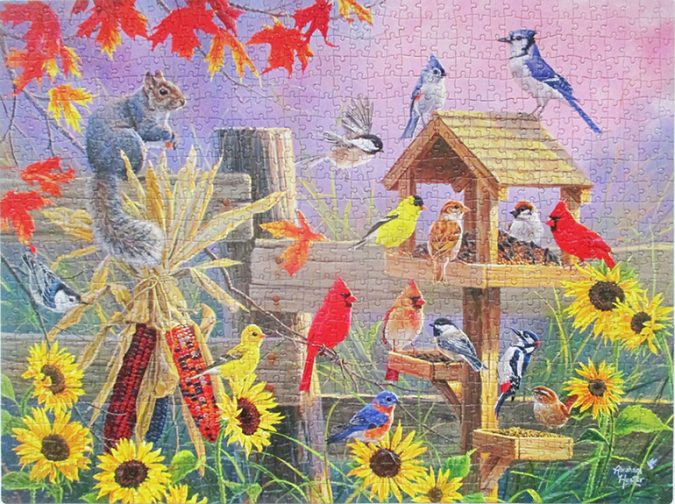


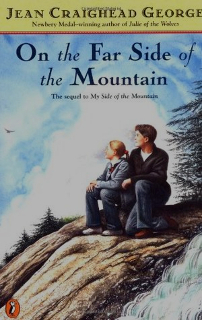
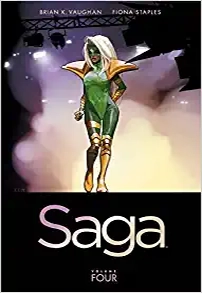

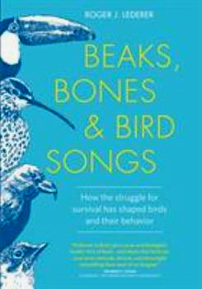
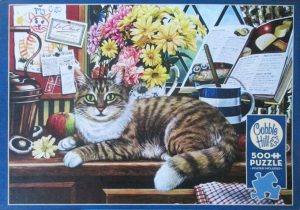 Another relatively easy puzzle- I really liked doing this one. Cobble Hill has such fun shapes! There was one piece missing. I made a replacement. Instead of cutting cardboard I used thinner material from a food package box. Had to glue four layers to get the right thickness, but it was easier to cut out the shape this way, even though I had to do it four times.
Another relatively easy puzzle- I really liked doing this one. Cobble Hill has such fun shapes! There was one piece missing. I made a replacement. Instead of cutting cardboard I used thinner material from a food package box. Had to glue four layers to get the right thickness, but it was easier to cut out the shape this way, even though I had to do it four times.
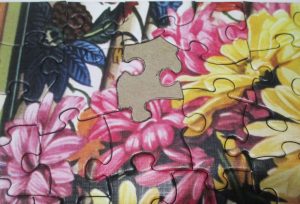
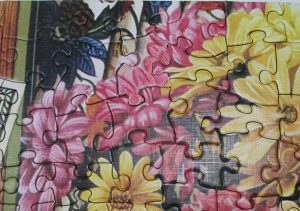
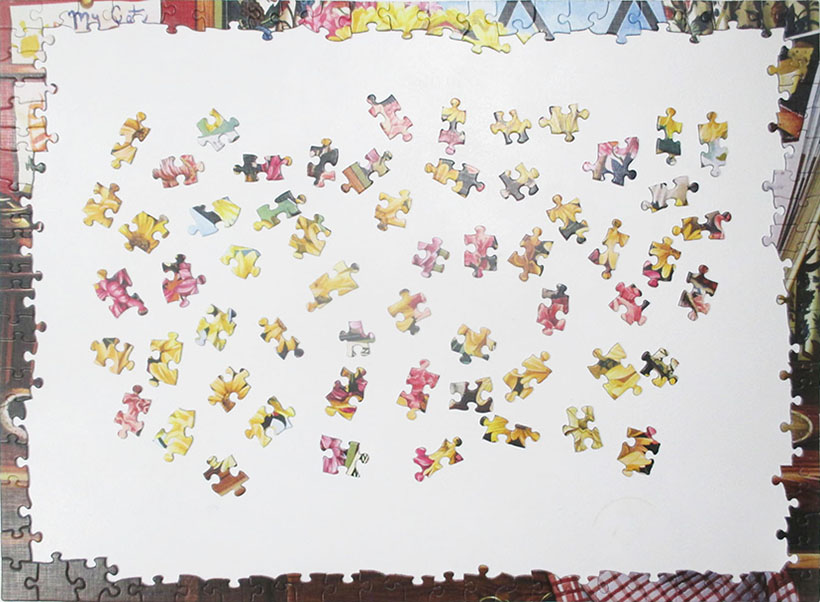

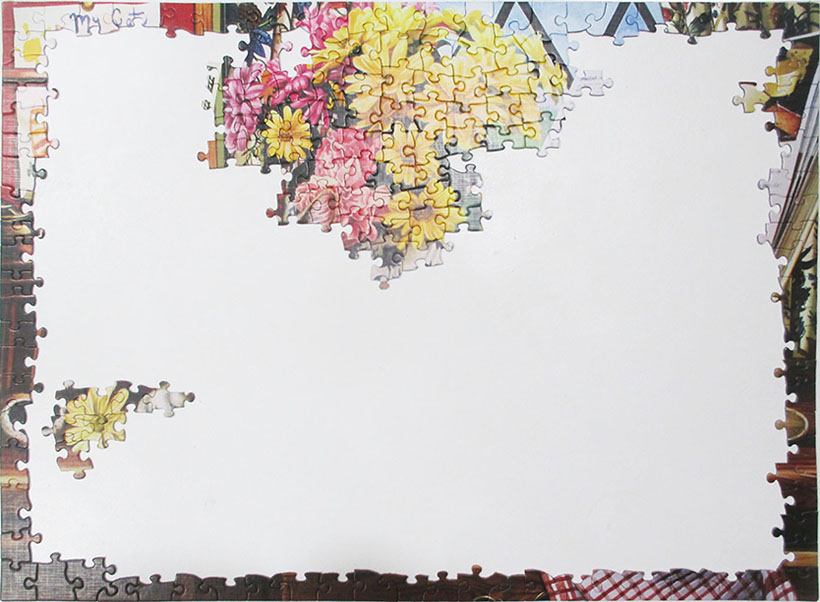
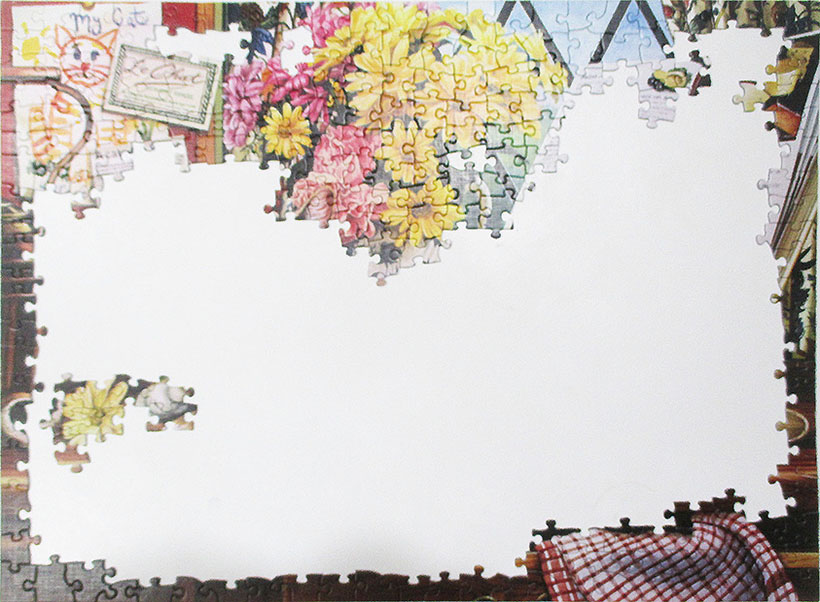
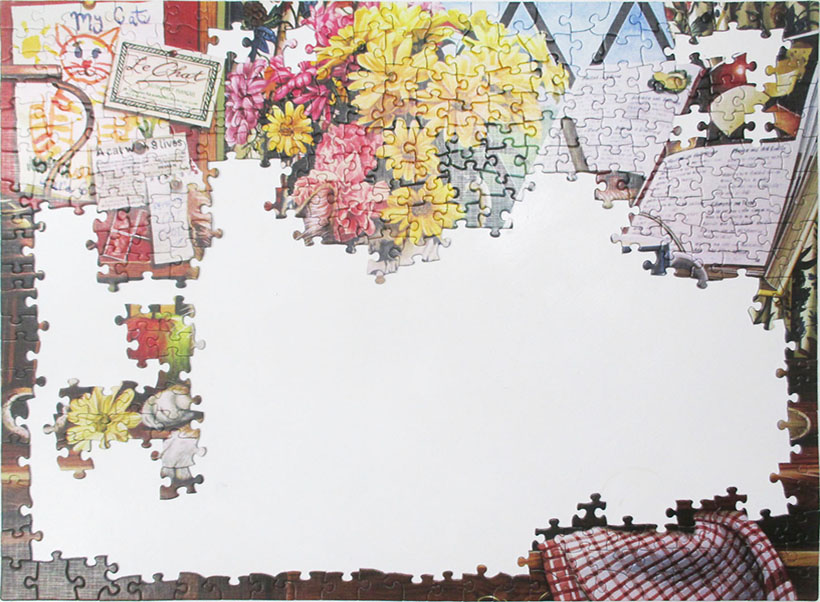

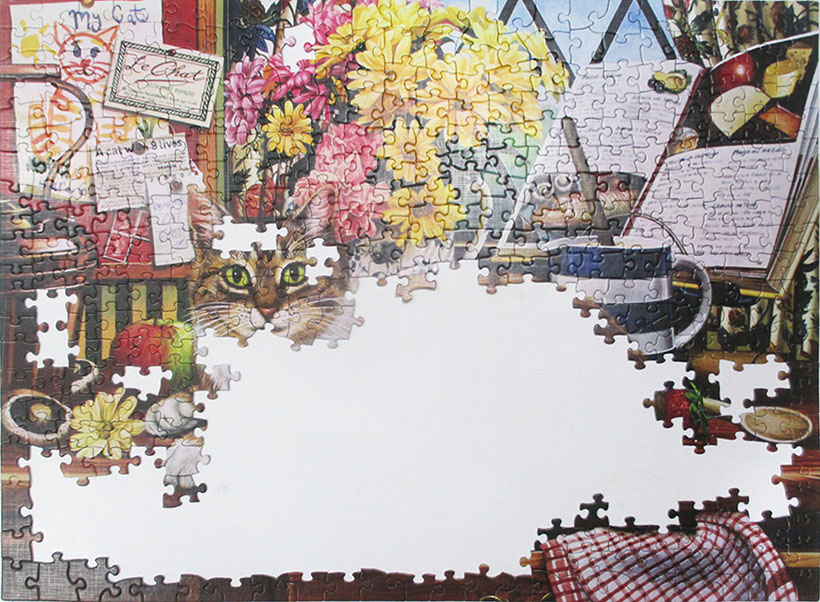
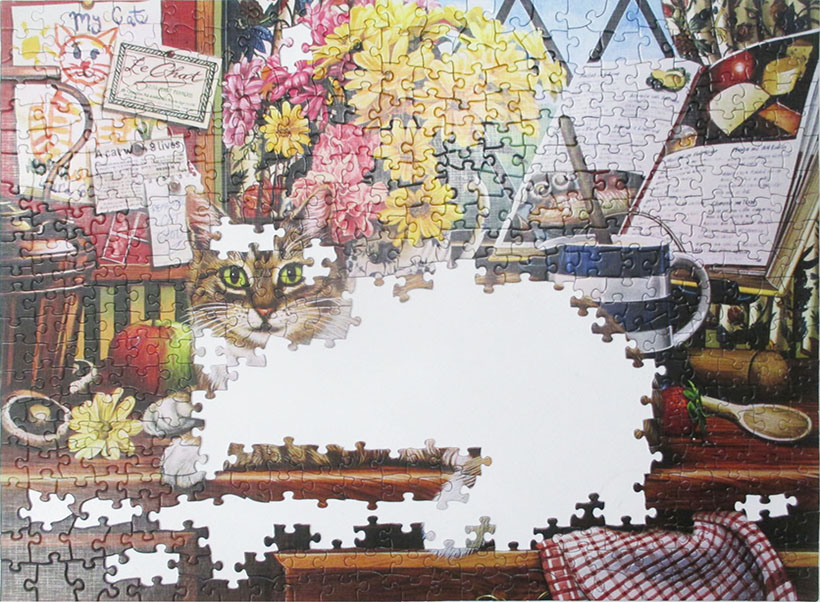
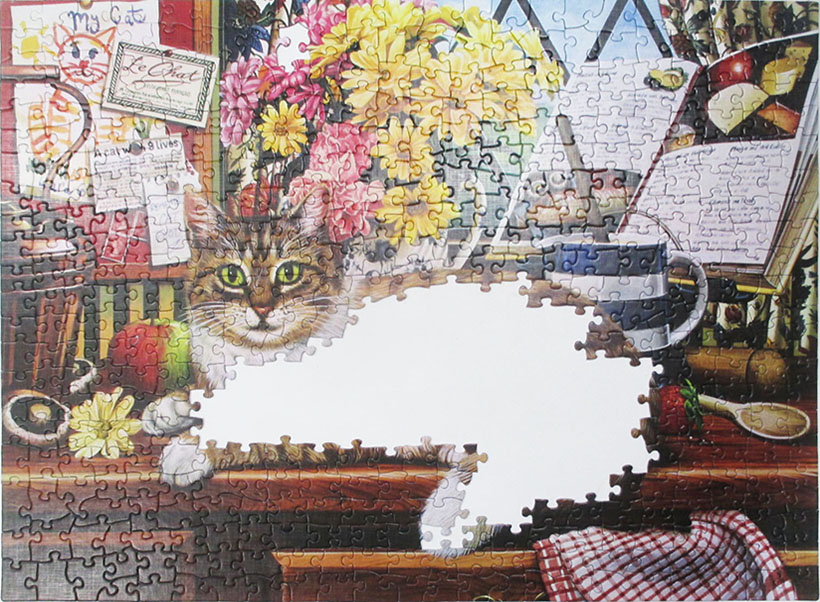
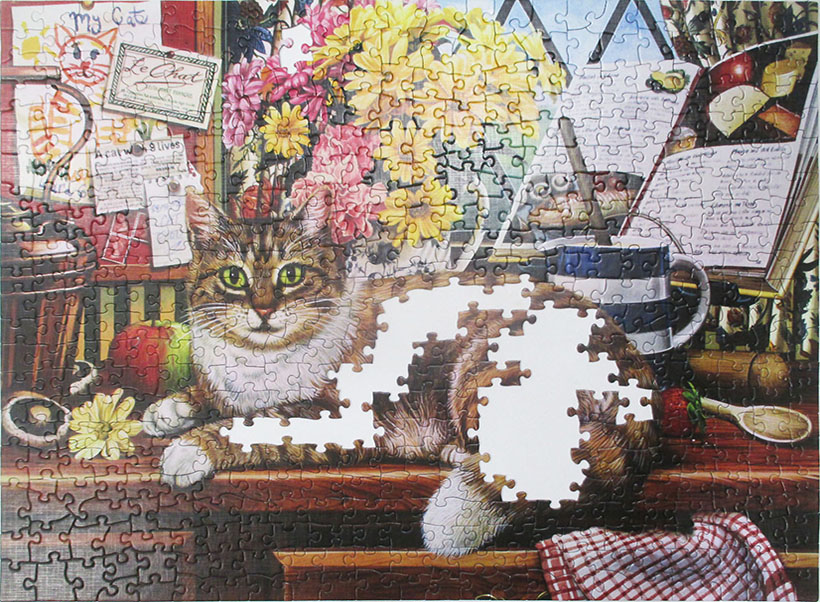

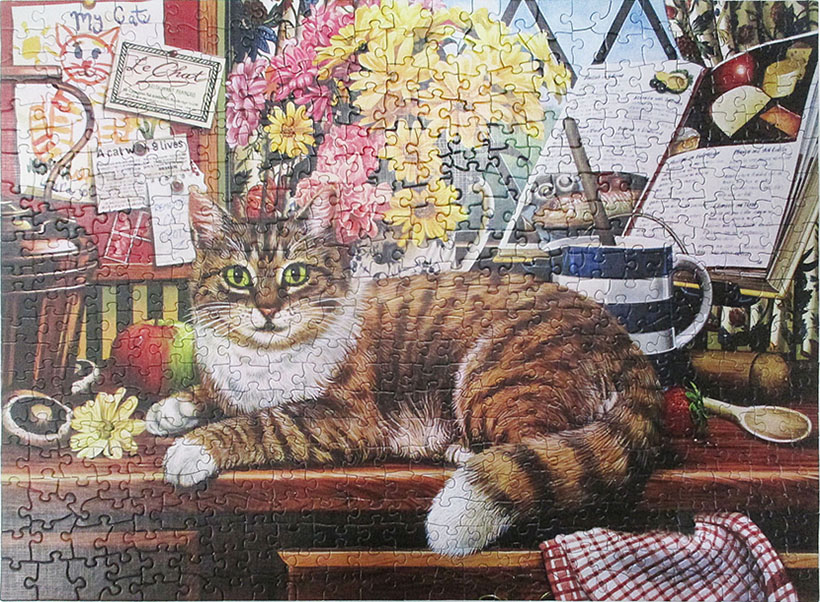
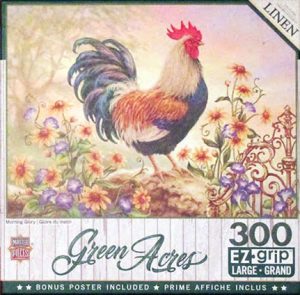 I always wanted a puzzle with a rooster picture. Needed something easy- just relaxing and fun- after that hummingbird headache. This one perhaps a bit too easy- rather low piece count for me, and they’re large too. I liked it, though. This one had lovely linen texture with minimal glare, and the shapes of decent variety.
I always wanted a puzzle with a rooster picture. Needed something easy- just relaxing and fun- after that hummingbird headache. This one perhaps a bit too easy- rather low piece count for me, and they’re large too. I liked it, though. This one had lovely linen texture with minimal glare, and the shapes of decent variety.